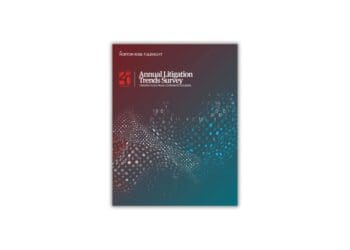What happens when employees add a few out-of-policy expenses? If reports are reviewed manually, these items might slip right on through, but an AI solution can help flag them. Anant Kale and Josephine McCann of AppZen highlight some of the craziest expenses they’ve seen.
Employees who are unfamiliar with your company travel and entertainment (T&E) policy may accidentally submit an out-of-policy expense occasionally. While there are undoubtedly honest mistakes from time to time, some employees can get pretty creative with their expense reports.
Below are a few of our favorite real expenses. You may be surprised at what some employees try to pass as business spend!
9 “Unique” Expense Requests
- Cufflinks – An employee submitted a receipt for gold-plated cufflinks. The reason? A gift to a famous rapper. It’s unclear if he ever received them.
- Starbucks gift cards – Employees will add a $20 gift card to their morning coffee run on a business trip. The receipt is reimbursed by the company, meaning you’re footing the bill for several more lattes than you intended. A human auditor probably wouldn’t question a receipt for $25 from Starbucks, and it would pass the meal limit thresholds set by your policy, but AI will scan the itemized receipt and flag the word “gift card’ to an auditor’s attention for review.
- Lunch with oligarchs – Lunch with foreign officials is a big no-no in the eyes of the Foreign Corrupt Practices Act and U.K. Anti-Bribery Act, which sees lunches, gifts or “anything of value” as bribes (which violate these regulations and result in enormous fines). AI will flag attendee names on meal receipts to make sure your employees aren’t dining with any foreign diplomats or heads of state, keeping your company out of regulatory hot water.
- Gear from Lululemon – You’d be surprised how many clothing receipts we see. In this bold move, an employee expensed over $250 of clothing from Lululemon. There wasn’t even a business reason listed – it’s possible they thought that it wouldn’t be caught or that they felt justified in their purchase. This trick didn’t pass AI, however, which flagged the retailer as out-of-policy.
- “Airbnb” on a friend’s couch – In this creative scheme, two friends were in cahoots. One of them posted their home on Airbnb at a ridiculously high price that no one would ever pay. The associate participating in the scheme stayed there when he was in town and submitted the listed price for reimbursement. Then, the friends split the money between themselves. AI noticed the higher-than-average room rate for the region and flagged this to auditors’ attention.
- Strip club “services” – Strip clubs like Spearmint Rhino typically have DBA names they use on receipts so they can stay undetected by expense report approvers. AI knows that “K-Kel, Inc” is not a name of a restaurant, but the DBA name for Spearmint Rhino (and you’d be surprised how often this is flagged!).
- Cigars for the team – Whether it’s buried in an itemized receipt or under an unfamiliar brand name, AI can detect the brand names of hundreds of out-of-policy purchases. In this case, a manager expensed cigars for his team as a reward for a great quarter. While we’re on board with perks and rewards for employees, this manager might want to pick something that’s within their company policy next time.
- An “extramarital” travel companion – Sometimes, an expense report may seem too high for one person. In this case, the expenses were being used to cover an executive’s travel costs, including business class airfare and meals, for a companion on a business trip to Europe. Company investigations later revealed that this wasn’t for the executive’s spouse.
- Private helicopter ride – Traffic jams can get pretty terrible in certain cities, but a private helicopter ride? Maybe this employee had an important meeting to attend, but whatever the reason, this unauthorized expense was flagged by AI for auditor review.
Preventing T&E Fraud
A well-managed T&E program reflects a well-run compliance function and, ultimately, a well-run company. An efficient T&E management program can help the company save on its T&E spend, set clear expectations for employees and prevent fraud and provide spend data that helps manage the business. But where should you start with your T&E policy?
Who should be covered? The policy should apply to anyone traveling on the company’s dime – employees, consultants, potential candidates, interns and contractors.
Where is travel booked? Should you book through a company-approved travel management tool (Concur, Netsuite, BCD, Egencia, CWT) or travel agent? Or can you book through an online travel site like Priceline, Kayak, airline websites, etc.? When a company doesn’t use a travel management tool, it’s allowing employees a higher degree of discretion in their booking choices, which could cost the company more money.
How should employees pay for travel? Should they use a company-sponsored corporate card or use their personal card and submit expenses for reimbursement? For employees with corporate cards, it’s essential to state in the policy that they’re required to take responsibility for delinquent or late payment fees. Identify the repercussions of misusing a travel card (for personal expenses, extravagant expenses, etc.), such as suspending corporate card usage and requiring pre-approvals for all travel expenses.
When are pre-approvals required? Identify situations when a pre-approval is necessary and outline the process for approvals. An example is for high-dollar expenses for conferences and international travel or requiring a supervisor to approve the trip cost before booking. Although having an approval process can reduce misconduct and potential fraud, requiring any approval is time-consuming, especially if the approver is on vacation and the employee needs to book travel quickly. Consider requiring approvals for only a limited number of situations.
How does the reimbursement process work? Identify what expense platform should be used to submit expenses, as well as what documentation is needed for timely reimbursement, such as itemized receipts, expense justification/purpose and copy of pre-approval, and clearly state the reimbursement time frame.
3 Parts to a T&E Policy
- Start with an introduction, or purpose statement and identify why there is a T&E policy to whom it applies.
- Second, identify expectations for employees and clearly state the process for individuals who fail to comply with the policy.
- Lastly, set clear guidelines for what expenses are permitted. Here’s a deep dive into the broad expense categories.
Expense Category Best Practices
Companies can use these to create an air-tight T&E policy.
- Flights – Cabin class; economy is usually preferred. Business-class may be allowed if it’s a long-haul flight (5+ hours) or international travel or depending on the role of the traveler (C-suite).
- Hotels – Do you have preferred hotel chains with pre-negotiated rates? Are Airbnb or HomeAway bookings allowed? Provide a list of suggested hotel chains or hotel-rate limits per night for top travel destinations.
- Rental Cars – SUVs, luxury cars, prepaid fuel, additional insurance bought from rental company and GPS rentals are usually not reimbursable. Provide guidelines on car size, insurance coverage and refueling policy.
- Ground Transport (Train, Taxi) – Provide guidelines on using limo or town car services (usually not allowed). Communicate if employees can use their personal car on business travels and what they can be reimbursed for, such as mileage, parking, tolls. Refer to the IRS standards for mileage reimbursement.
- Meals and Entertainment – Differentiate between employee meals and business meals by having a specific expense type for each in your T&E system. Identify guidelines for what is allowed for internal travel and meals versus external business entertainment. Define where alcohol can be expensed (e.g., internal employee meals, client meals, etc.). We suggest defining the maximum limit on alcohol as opposed to stating “no excessive spend on alcohol.”
- Gifts and Donations – Address how to provide a gift to a commercial client or third party.
T&E can be one of the most significant components of indirect spending, and it can be one of the most complex and hardest to control. Improving the management over your T&E processes by fully leveraging data, reducing noncompliance, enforcing policy violations and creating more efficient methods is what makes a successful T&E program. Start building your T&E policy and process today.



 Anant Kale is Co-Founder and Chief Executive Officer of
Anant Kale is Co-Founder and Chief Executive Officer of  Josephine McCann is a Product Marketing Manager at AppZen, where she loves crafting content and telling exciting stories.
Josephine McCann is a Product Marketing Manager at AppZen, where she loves crafting content and telling exciting stories.








